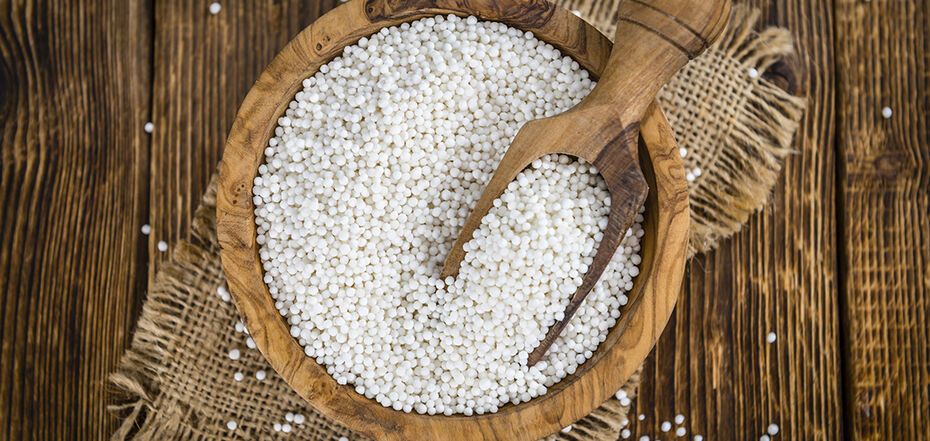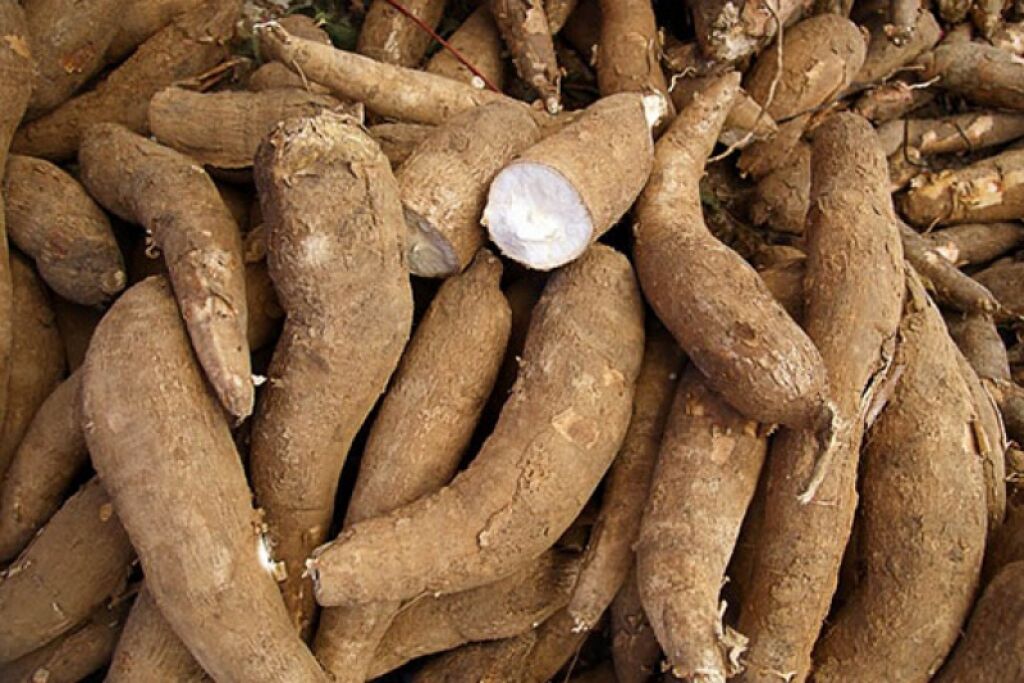LS Food
Tapioca: a new product that strengthens the immune system
Tapioca is a food of tropical origin that is now widely consumed worldwide due to its nutritional properties and versatility.
Tapioca is a food starch that is derived from the tubers of bitter cassava, a tropical plant. This food is an integral part of the diet of the population of Africa and South America, viversano.net reports.
"The process of making tapioca from cassava is very complicated and time-consuming. The tubers are grated to remove the liquid that contains toxic substances. Then they are washed, dried, and turned into a powder, which is processed again. The resulting flour is high in calories and nutrition, consisting mainly of starch.
This is a gluten-free product. Tapioca flour is often used to feed babies. It is easily digested and is excellent for the intestines of newborns. For the same reason, it is often added to the diet of those suffering from colitis and inflammatory bowel disease.
Calories and nutritional properties
Tapioca is a fairly high-calorie food. It provides about 360 kcal per 100 g, almost entirely in the form of carbohydrates (the amount of protein and fat is quite low). It also contains vitamins, especially B2, and minerals, including calcium, iron, zinc, potassium, and phosphorus.
Tapioca: health benefits
Given its composition, we can talk about the significant health benefits that tapioca can bring.
Anti-inflammatory properties for the digestive system
Due to its extraordinary digestibility, tapioca is suitable for use by those who suffer from gastrointestinal problems due to chronic diseases or by children during weaning. It also contains saponins, compounds that help soothe inflammation and promote the excretion of uric acid.
Strengthens the immune system
The iron, zinc, and B vitamins contained in tapioca give it the ability to strengthen the immune system through its antioxidant properties. In addition, tapioca has a prebiotic effect on the intestinal bacterial flora, an important component of the immune system.
High energy value
Given the prominent presence of carbohydrates, tapioca is an excellent food that provides the body with energy, even avoiding the use of fats. It is especially suitable for those who play sports.
Helps the cardiovascular system
Tapioca can regulate blood pressure thanks to its potassium content, an important mineral salt that works in synergy with sodium and has a vasodilating effect. In addition, thanks to its iron content, it supports the functioning of red blood cells, contributing to good blood circulation.
Suitable for celiac disease
Tapioca does not contain gluten, so it can be freely consumed by those with celiac disease.
Good for the skeletal system
Tapioca protects bones and joints thanks to its calcium and phosphorus content, two minerals that form the basis of bone tissue. Phosphorus, together with calcium, contributes to the process of bone remineralization, which is fundamental both during growth and in old age to fight osteoporosis.
How to use tapioca in the kitchen
Tapioca can be used in the kitchen in several ways. It is usually sold in the form of flour to make baby food. It can be dissolved in hot water to make a semi-liquid porridge that is good for both a baby during weaning and for the elderly who have trouble chewing or swallowing. It is also used to make desserts or baked goods.
In addition, tapioca comes in the form of granules or balls, which, when hydrated, acquire a gel-like consistency and a fairly neutral taste. They can be added to milk, used to thicken soups and sauces, make puddings, or as an egg substitute.
In general, tapioca flour or balls are suitable for both sweet and savory dishes. However, keep in mind that it is almost entirely carbohydrates, so additional protein is needed. For example, make a bean soup, meat or fish cutlets, or stuffed buns.
Cassava is usually cooked in boiled, baked, or fried form, but it should not be eaten raw.
Cassava and tapioca: differences in nutrition
Tapioca is easily confused with cassava. Cassava is the tuber from which tapioca is obtained. Therefore, being different products, they also have different nutritional properties. Cassava is rich in carbohydrates, minerals, and vitamins, and some varieties also contain toxic substances that are removed during the tapioca extraction process. Consequently, cassava has a more stable fiber component than tapioca, as well as a higher water content, since it undergoes a dehydration process to become flour.
Contraindications.
Contraindications to the use of tapioca are related to the fact that, having a lot of carbohydrates in the form of starches, it has a fairly high glycemic index (unlike cassava, which, not being refined, has lower indicators), so it should be used with great caution by people with diabetes or glucose problems. In addition, due to its high calorie content, it is not recommended for those who want to lose weight, except in small quantities and accompanied by protein foods. If you want to eat cassava, you need to make sure that it is not a "bitter" variety containing toxic substances.
This conclusion was reached after 10 years of observations by Spanish and American scientists.





























